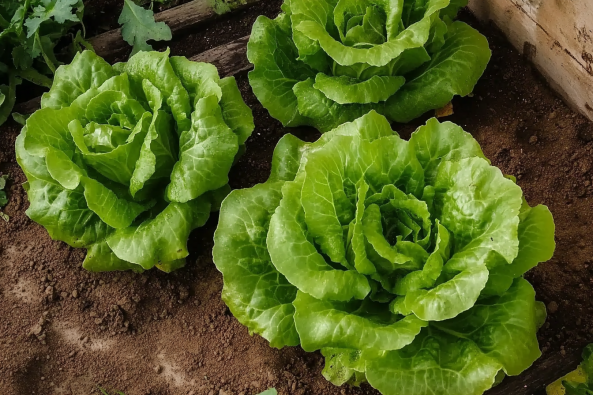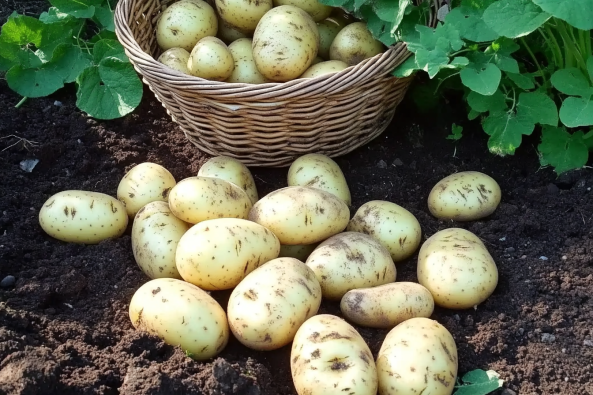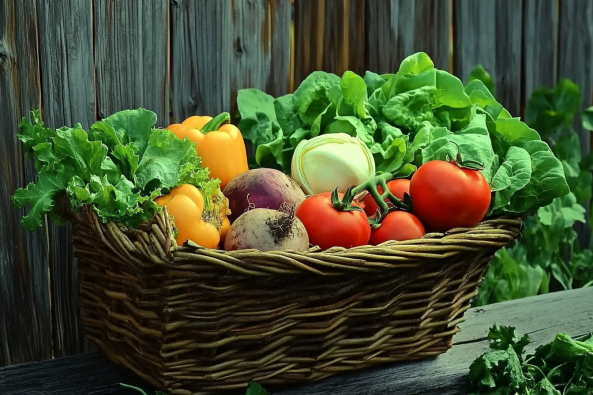Why Spring is the Best Time to Start Your Garden
Spring is the perfect season to start your vegetable garden. With milder temperatures, longer daylight hours, and increased rainfall, plants have the ideal conditions to grow strong and healthy. Let’s explore why spring is the best time to get started and how it benefits your garden.
Benefits of Planting in Spring
- Optimal Growing Conditions: Spring offers a balance of warmth and moisture, which helps seeds germinate quickly.
- Extended Harvest: By planting early, you can enjoy fresh vegetables throughout the summer and even into the fall.
- Fewer Pests and Diseases: Many common garden pests become more active in the summer, so planting in spring gives your plants a head start before they arrive.
- Better Soil Conditions: After the winter, soil is often rich in nutrients and easier to work with.
How Spring Weather Affects Plant Growth
Spring provides cool temperatures that help certain vegetables thrive. The combination of warm days and cool nights is particularly beneficial for leafy greens, root vegetables, and early-season crops. Additionally, spring rains help keep the soil moist, reducing the need for constant watering.
How to Prepare Your Garden for Spring Planting
Before you start planting, it’s crucial to prepare your garden properly. Good preparation ensures that your vegetables grow strong and healthy, leading to a more productive harvest.
Choosing the Right Location
- Select a sunny spot where plants can get at least 6-8 hours of direct sunlight daily.
- Ensure good drainage to prevent waterlogging.
- Consider wind protection if your area is prone to strong gusts.
Soil Preparation and Fertilization
- Test your soil to determine pH levels and nutrient content.
- Add organic compost to improve soil structure and fertility.
- Use natural fertilizers like manure or bone meal to enhance growth (Read more about using vegetable garden fertilizers effectively).
Companion Planting for a Successful Harvest
Companion planting can enhance growth, deter pests, and improve yield. Some great companion planting ideas include:
- Lettuce and Carrots – Carrots loosen the soil for lettuce roots.
- Peas and Spinach – Peas fix nitrogen in the soil, benefiting leafy greens.
- Cabbage and Onions – Onions help repel cabbage worms.
Best Vegetables to Plant in Early Spring
1. Lettuce – Fast-Growing and Cold-Resistant

Lettuce is one of the easiest vegetables to grow in early spring. It thrives in cool weather and can be harvested multiple times throughout the season.
- Best Varieties: Romaine, Butterhead, Iceberg
- Growing Tips: Sow seeds directly in the soil and keep the ground consistently moist.
2. Beets – Nutrient-Packed and Easy to Grow
Beets are rich in nutrients and can be eaten raw, roasted, or pickled.
- Best Varieties: Detroit Dark Red, Golden Beets
- Growing Tips: Plant in well-drained soil and thin seedlings to encourage root development.
3. Radishes – Quickest Harvest Time for Beginners
Radishes are perfect for first-time gardeners because they grow quickly.
- Best Varieties: Cherry Belle, French Breakfast
- Growing Tips: Space seeds evenly and keep soil moist for tender roots.
4. Spinach – Hardy Green for Cool Weather
Spinach is packed with nutrients and grows well in early spring.
- Best Varieties: Bloomsdale, Baby Leaf
- Growing Tips: Plant in partial shade and keep soil damp for optimal growth.
5. Peas – Sweet, Nutritious, and Perfect for Spring
Peas are an easy-to-grow vegetable that loves cool weather.
- Best Varieties: Sugar Snap, Snow Peas
- Growing Tips: Provide support with a trellis and harvest pods when they’re plump.
6. Carrots – Thrive in Loose, Cool Soil
Carrots prefer loose, sandy soil to develop long, straight roots.
- Best Varieties: Nantes, Danvers
- Growing Tips: Keep soil damp and thin seedlings to avoid overcrowding.
7. Cabbage – A Staple for Spring Gardens
Cabbage is a versatile vegetable that thrives in cool weather.
- Best Varieties: Green Cabbage, Savoy
- Growing Tips: Protect young plants from pests like cabbage worms.
8. Broccoli – A Cold-Tolerant Vegetable Packed with Nutrients
Broccoli is a great source of vitamins and antioxidants.
- Best Varieties: Calabrese, Purple Sprouting
- Growing Tips: Mulch around plants to retain moisture and suppress weeds.
9. Kale – A Superfood That Thrives in Spring
Kale is one of the most resilient spring vegetables and provides a continuous harvest.
- Best Varieties: Curly Kale, Lacinato
- Growing Tips: Harvest outer leaves first for a prolonged yield.
10. Potatoes – The Classic Spring Crop for Big Yields

Potatoes are easy to grow and provide a substantial harvest.
- Best Varieties: Yukon Gold, Red Pontiac
- Growing Tips: Plant seed potatoes in trenches and hill up soil as they grow.
Tips for Successful Spring Vegetable Gardening
When to Start Seeds Indoors vs. Direct Sowing
- Start indoors: Broccoli, cabbage, kale (4-6 weeks before transplanting).
- Direct sow: Lettuce, carrots, radishes, peas (as soon as soil is workable).
Common Pests and How to Prevent Them
- Aphids – Use neem oil or insecticidal soap.
- Slugs – Place crushed eggshells around plants.
- Cabbage Worms – Use row covers to protect brassicas.
Best Organic Fertilizers and Soil Amendments
- Compost – Improves soil fertility naturally.
- Fish Emulsion – Provides quick nitrogen boost.
- Bone Meal – Enhances root development (Read more about fertilizers here).
Related Articles You May Like
Final Thoughts – Start Planting for a Bountiful Season!
Spring gardening is an exciting way to kick off the growing season. By planting early, you set yourself up for a long, productive harvest. Whether you’re growing leafy greens, root vegetables, or hearty crops like potatoes, there’s something rewarding about watching your garden flourish.
We’d love to hear from you! What are your favorite vegetables to plant in spring? Drop a comment below!
Subscribe for More Gardening Tips!
Get a free printable spring planting guide by subscribing to our newsletter. Follow us on social media for daily gardening inspiration and expert tips.
For more inspiration, check out this external guide: 10 Vegetables You Can Plant in the Spring.

